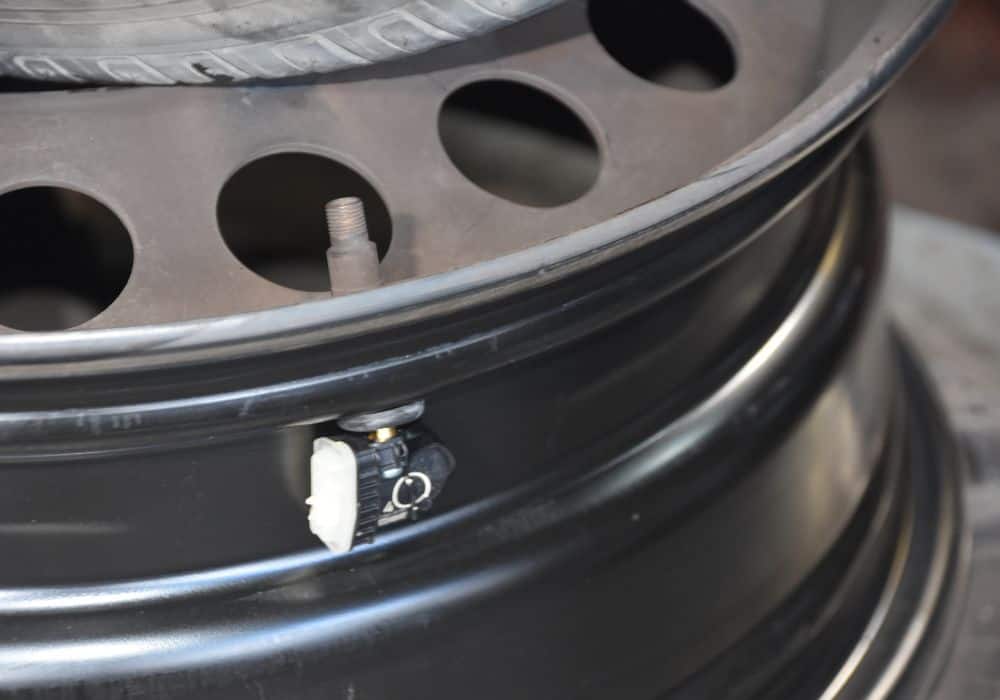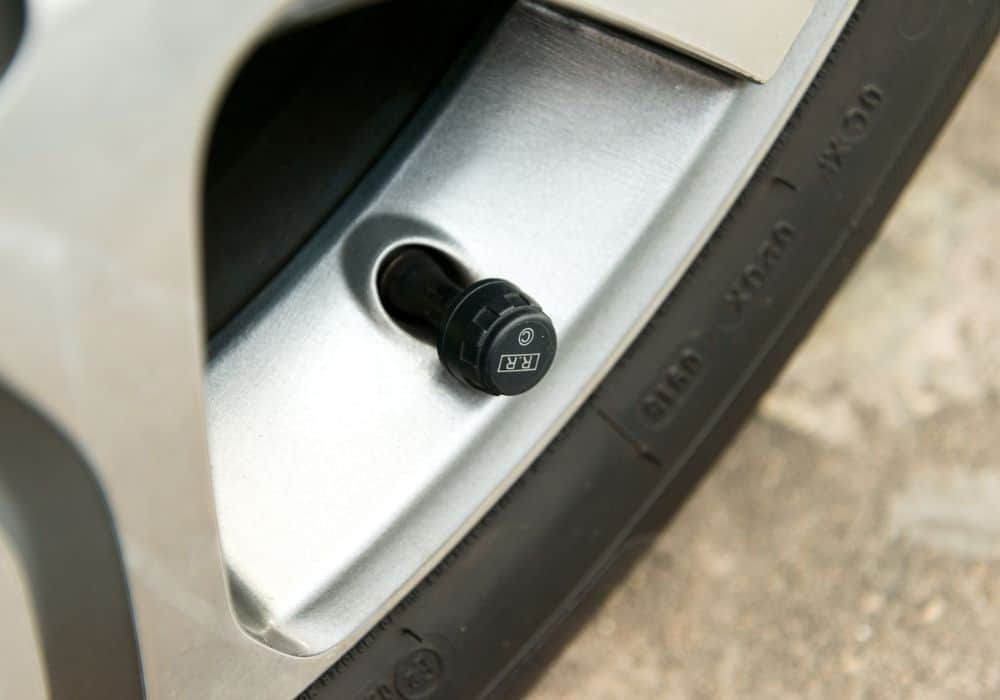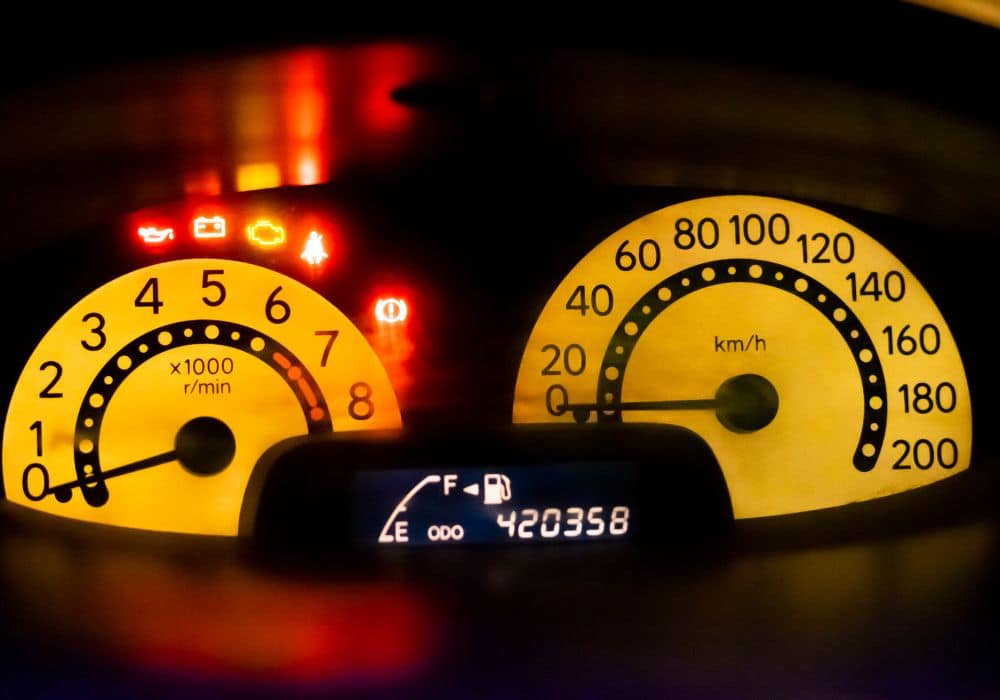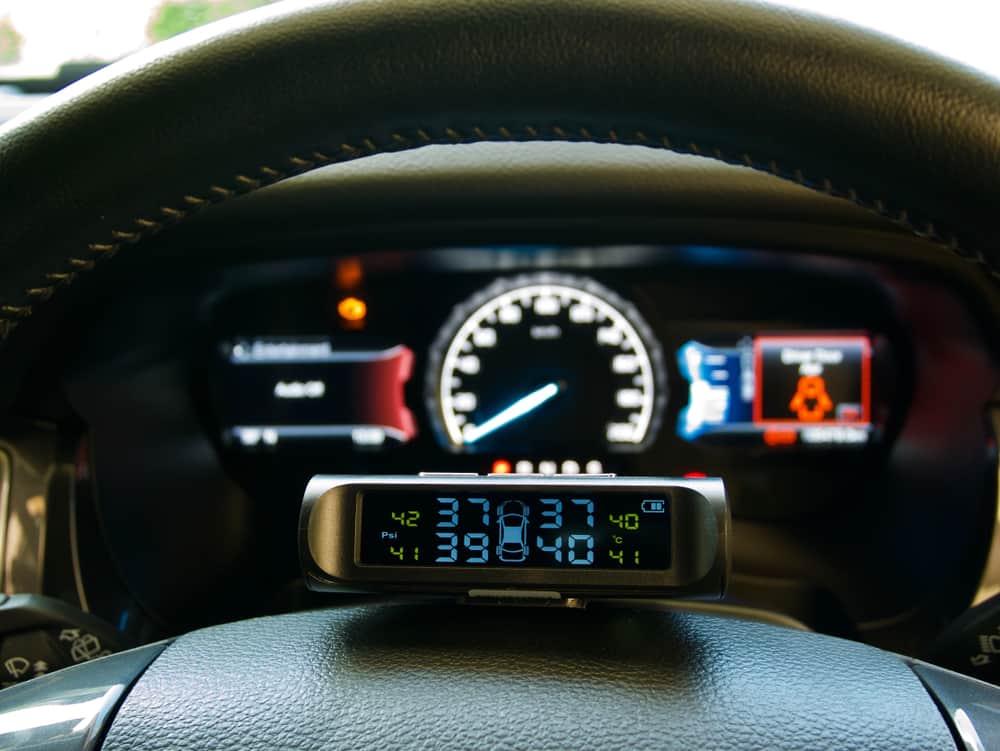A tire-pressure monitoring system, also known as a TPMS, is an essential feature of all our vehicles. It reports the pressure of tires in real time and highlights when driving during dangerous conditions.
Not only does it serve a vital function in protecting us and our cars, but it’s also a legal requirement that you must be mindful of. Poorly inflated tires, after all, can cause a loss of control and poor grip on terrain and prevent cars from braking in time.
So when the battery of your TPMS system fails, replacing it is of the utmost importance. But sometimes, it can be difficult working out just how costly this replacement can be, especially if you have to repair several components.
This article will explore all the costs and considerations you need to make when replacing your TPMS battery. We’ll explain how we’ve calculated the average price, why you need to replace your battery and offer tips for a quick, easy, and stress-free installation.
Table of Contents
How do TPMS sensors work?
The TPMS system sends tire pressure data to the control module of your car. A specialized scanner checks this data and alerts you to significant tire pressure dips that warrant your immediate attention.
How much is a TPMS battery replacement?

A TPMS battery can cost anywhere between $50 to $120. However, this may vary depending on where you are, as battery prices and service charges differ widely.
Additionally, some factors can influence the cost of replacing a TPMS battery. Three of the most common include:
1. Car model
It stands to reason that the make, model, and condition of your car can affect the price of replacing a TPMS battery. Though you’ll be happy to know, these changes are small and won’t make a significant difference unless your model has an unusual design or parts are scarce.
Price comparison site YourMechanic.com found that pressure sensor replacement service differs slightly on modern-made car models. A Honda Accord, for example, may cost $95, whereas a Hyundai Accent costs slightly more at an average of $100.
2. Cause of damage and materials required
You must consider the materials used in your car’s design, including the TPMS system. Most components will be made of plastic, rubber, or lightweight metals such as aluminum. These can suffer damage over time, including corrosion.
That is because the metal parts, such as the vale or nut, suffer from exposure to moisture and road salt. If corrosion is the leading cause of the replacement, you may expect to pay more because most, if not all, fittings will also need replacing.
Additionally, certain tire products, like aerosols and inflators, can deteriorate the TPMS sensor. Always use products specifically labeled as “TPMS safe.”
3. Avoid aftermarket sensors
Especially if you are doing your replacement DIY, you may be tempted to buy aftermarket sensors, i.e., generic parts made by manufacturers other than the cars.
While this may seem cheaper initially, many aftermarket sensors fail to communicate correctly with the car’s computer. In this scenario, you’ll have to replace them again, doubling the replacement cost.
Instead, sourcing manufacturer parts relevant to your car to secure the best fits best parts ensures you’re not bogged down by computability issues later in your car’s lifespan.
FAQs:

1. Is there a legal requirement for TPMS?
Given their importance in safety, there is a requirement for TPMS systems. The U.S. Congress passed the ‘Tread Act’ in 2000, which mandated tire-pressure monitoring systems in passenger cars and light trucks sold from September 1st, 2007, onwards.
2. Why does the maintenance of tires with pressure sensors cost more?
Cars with a tire pressure sensor may cost more in terms of maintenance and servicing because of additional parts like sealing caps, nuts, valve core, and grommets. There are also additional labor costs to consider.
That said, the added safety that tire pressure monitoring sensors provide is well worth the additional costs incurred.
3. How long does a battery in a TPMS last?
As crucial as your TPMS is, the battery has a shelf life, and you will need to replace it at some point. You can expect the lithium-ion batteries commonplace in TPMS to last anywhere from five to ten years. After this, you should actively see replacing the battery to ensure it is properly working.
4. How to replace the TPMS battery on your own
If you want to reduce the price of your battery replacement and eliminate rising labor costs by a mechanic, you can replace the system yourself. Various guides and YouTube tutorials ensure you can do everything yourself with minimal skills required.
5. Why is tire pressure so significant, anyway?
There’s a reason a warning light on your dashboard flashes because of low tire pressure – it is something you need to always take care of as soon as possible.
Tire pressure helps distribute the weight of your vehicle evenly, ensuring your tires have adequate grip and are more stable. Additionally, equal pressure across all tires ensures that they all last longer, and not one, in particular, wears down.
Besides the TPMS warning light, common symptoms of poor tire pressure include:
- Your car is burning more fuel than average.
- Tires show increased wear and tear, especially on the outer edges, because of unequal weight distribution.
- The car is not as reactive to turning as before and feels like it’s not connecting well with the terrain.
- Strange, alarming sounds are coming from tires.
- Your car takes longer to stop when you apply the brakes.
6. How long does it take to replace a TPMS sensor?
Replacing part or all of your tire pressure monitoring system is a quick, straightforward process that can take upwards of 1 to 2 hours to complete. That said, this can add to the cost of the job if you consider going to a mechanic.
This is because, given this short period, most professionals will charge a minimum fee to install sensors, alongside hourly labor costs and the price of sourcing parts.
7. Are there different types of TPMS systems?
There are two different systems you should be mindful of. They include:
- Direct system: this is based inside the wheel and measures pressure directly. It is easy to detect and replace.
- Indirect system: This is integrated into the ABS sensor of your car. It detects safety concerns like abnormal braking.
8. What about spare tires?
Spare tires are a safety net for when something terrible happens when driving. But it should be noted that as well as spare tires, you should also have extra TPMS sensors to go alongside them. The only consideration you must have is that when new wheels are installed, you will need to use a TPMS installer so that the car can relearn new sensors to its computer.
Expert tips to remember:

- Timeline: The lithium-ion batteries inside TPMS sensors may last anywhere from five to 10 years. After this, they will require replacement. Even older TPMS sensors are known to last between five and six years.
- Temperature: It’s best to check the tire pressure in the morning when the temperature, and the tires, are colder – the sun’s heat or friction when driving can falsely increase tire pressure.
- Beware of minimum fees: If going for a professional mechanic, be aware that many charges a minimum price, alongside an hourly rate and cost of parts.
- Appropriate sensors: Source sensors from your car’s manufacturer. This ensures compatibility and ease of installation and prevents you from replacing them earlier than expected.
- Use rate: Tires are estimated to lose up to 10% of pressure yearly if you drive a lot. It’s always wise to monitor pressure regularly, even if warning lights do not switch on.
- Legality: By law, cars and light trucks sold after 2007 require TPMS systems. If buying a second-hand car, ensure that it comes with this requirement.
Conclusion
The TPMS is one of your most important considerations with your vehicle. This battery-powered sensor serves a vital purpose in keeping you and your car safe.
If you’re doing a DIY project to replace your system, never compromise functionality for a lower price. Always use regulated, compatible car sensors, and regularly check that fixtures, fittings, and warning lights are in good working order.
When you detect a faulty TPMS battery, replacing it shouldn’t cost you too much. And because they can last a long time, they’re cost-effective in the long run.
But if you still have any questions about TPMS battery replacement, the costs involved, or tips you want to share, please leave a comment below.
But if in doubt, remember this when searching for a replacement:
- The average cost of replacing a tire air pressure battery ranges from $50-120.
- Low tire pressure negatively impacts your ability to steer and brake in time.
- Check every nut, cap, bolt, and valve stem when replacing sensors to check for corrosive damage.
